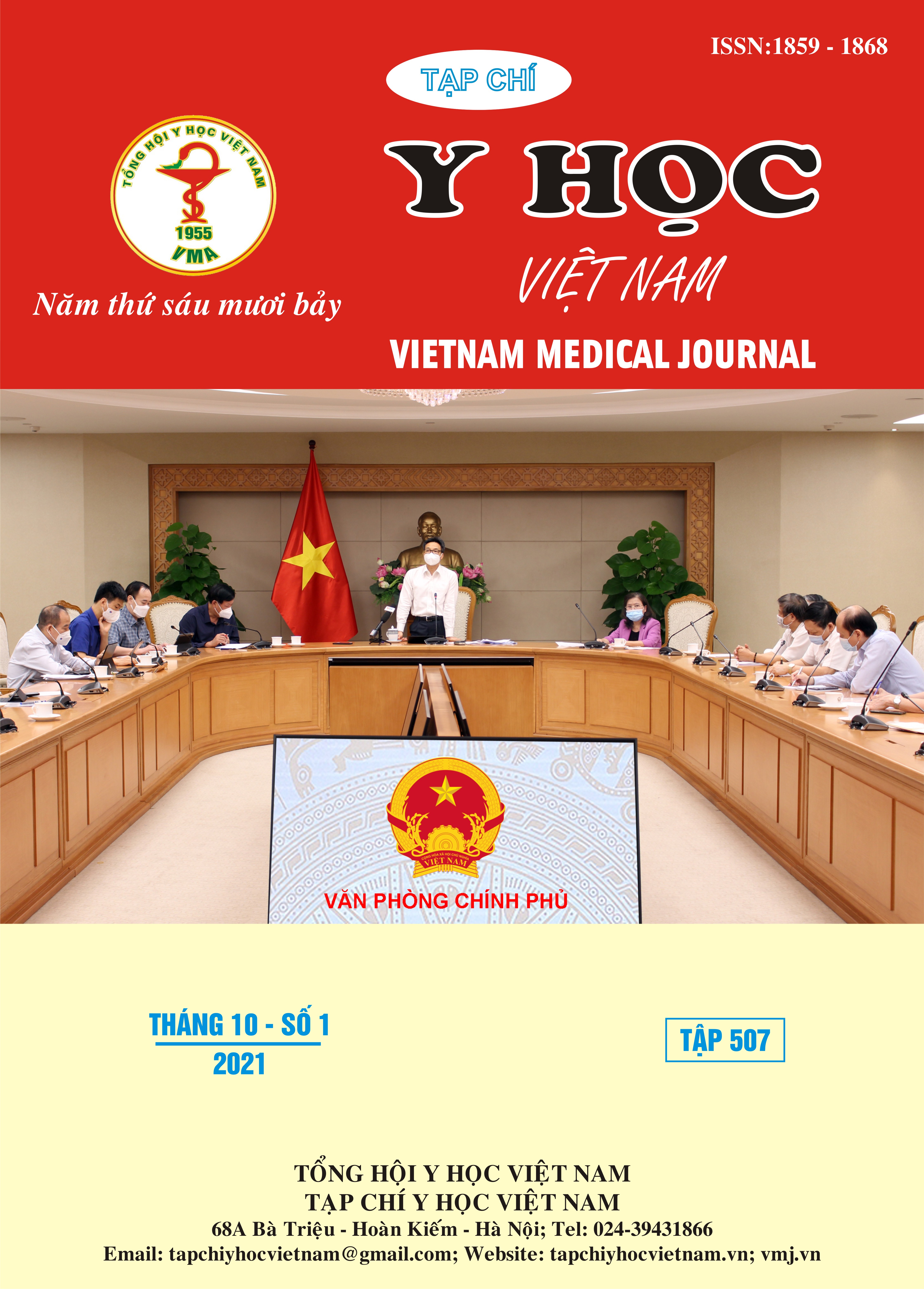EVALUATION THE RESULT OF ENDOSCOPIC ENDONASAL SURGERY (TYPE III, IV) BY USING AQUAMATYS
Main Article Content
Abstract
Aquamantys is new generation of coagulate plasma blade applied on precision bleeding control and advantage on coagulate soft tissue. Purpose: Evaluation the result of endoscopic endonasal surgery (type III, IV) by using Plasma Aquamatys. Methods: control intervention study of 2 groups (21 patients in study group using Aquamatys and 20 patients in control group no using Aquamatys) had a endoscopic endonasal surgery (type III, IV) in Hanoi Medical University hospital from August 2020 to August 2021. Results: surgery duration reduced in study group (78.9 ± 22.4 minutes) compared with control group (94.0 ± 21.5) with p <0.05. Average blood loss reduced in study group (86.7 ± 42.3 ml) compared with control group (116.0 ± 41.8 ml) with p<0.05. Physical symptoms based on VAS was better in study group compared with control group buts p>0.05 in day 5 after surgery; and was similar between 2 groups in 2 week and 2 month after surgery. Physical signs was similar between 2 groups in 2 month after surgery with p > 0.05. There was no different side effects between 2 groups. Conclusion: Aquamantys is safe and effectiveness coagulate in endoscopic endonasal surgery.
Article Details
Keywords
endoscopic endonasal surgery, endonasal chronic infection, Plasma Aquamantys, coagulation
References
2. Bram R, Fiore S, McHugh D, Samara GJ, Davis RP (2017). Hemostasis in endoscopic endonasal skull base surgery using the Aquamantys bipolar sealer: Technical note. J Clin Neurosci. 41:81-85.
3. Phạm Trung Kiên (2019). Nghiên cứu đặc điểm lâm sàng, cắt lớp vi tính, mô bệnh học các tổn thương xoang một bên. Luận văn chuyên khoa cấp II, Trường đại học Y Hà Nội.
4. Lê Đức Đông (2019). Nghiên cứu đặc điểm lâm sàng, cận lâm sàng và đánh giá kết quả điều trị phẫu thuật của viêm mũi xoang do nấm. Luận văn chuyên khoa cấp II, Trường đại học Y Hà Nội. tr78.
5. Yong Lee, Jae. (2008). Unilateral paranasal sinus diseases: analysis of the clinical characteristics, diagnosis, pathology, and computed tomography findings. Acta Oto-Laryngologica, 128(6), 621–626.
6. Marulanda G. A., Ulrich S. D., Seyler T. M. et al. (2008), Reductions in blood loss with a bipolar sealer in total hip arthroplasty, Expert review of medical devices, 5(2), 125-131.
7.Clement R. C., Kamath A. F., Derman P. B. et al. (2012), Bipolar sealing in revision total hip arthroplasty for infection: efficacy and cost analysis, The Journal of arthroplasty, 27(7), 1376-1381.
8. Ackerman S. J., Tapia C. I., Baik R. et al. (2014), Use of a bipolar sealer in total hip arthroplasty: medical resource use and costs using a hospital administrative database, Orthopedics, 37(5), e472-e481.


